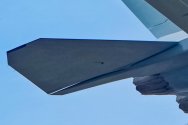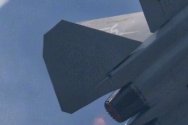You are using an out of date browser. It may not display this or other websites correctly.
You should upgrade or use an alternative browser.
You should upgrade or use an alternative browser.
J-35A fighter (PLAAF) + FC-31
- Thread starter ACuriousPLAFan
- Start date
The Chinese authorities and CCTV are very OPSEC savvy, so it's blatant that SAC/AVIC, PLAAF/PLANAF, and/or another state organ is intentionally publicizing the manufacturing capacity SAC has built up for the J-35/A.
Question is: what for?
Some people — inevitably and mostly Westerners and Indians — will scream "Chinese psyop" in response to the quoted footage to frame the PLA as a "paper tiger" desperate to exaggerate its capabilities. Savvier bigots of that variety might add that such a "psyop" would be intended to deceive DoD planners so they'll misprioritize programs intended to counter emergent Chinese capabilities.
However, let's think about this critically for a second . . . If there are people on this board who can do a good job estimating J-20 production rates, there are going to be plenty of professional analysts at NASIC and elsewhere with access to classified reporting on JWICS capable of competently assessing J-35 production capacity with or without watching CCTV.
The intended audience of such CCTV "leaks" is not a state actor. They wouldn't need it.
A more plausible scenario is that SAC/AVIC is publicizing the massive manufacturing capacity it has achieved for spitting out J-35/A fighters because it's good for business () and good for the careers of those leading these efforts. It's no secret that under General Secretary Xi.
The PLA might not have objected to such transparency as a certain degree of disclosure would've been inevitable given the export oriented nature of the J-35/FC-31 program since its inception.
With that said, we'll see more J-35/A "leaks," especially if an export customer — blessed by Allah with hydrocarbons — has already made a deposit for deliveries. That'll be an achievement that SAC/AVIC, especially their senior leadership, will want to milk publicly if permitted to do so.
Rick noted that we've never seen similar footage for the J-20. A key difference here is that the J-35 is intended for export, and this will naturally result in different publicity.
View attachment 155895
Found it, but for obvious reasons, I won't disclose the specific coordinates (should be easy tho).
This is purely for estimating the factory's size: 290m × 750m = 217,500 m². It's a big one indeed.
Notably, this is just one facility within the complex. The rendering (bottom right) suggests at least three additional adjacent factory structures.
More




Here is a rough translation of the above:

Is there a clear image comparison between the horizontal stabiliser types? The "hinge" Vs "pivot" types, as I recall seeing in text?

The tail sting is part of the fuselage, when horizontal stablizer is turned, the sting stays straight.
FC-31 2.0 with pivot
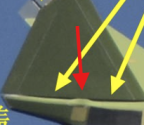
J-35A with pivot
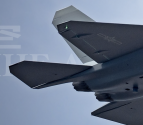
J-35A with hinge type.
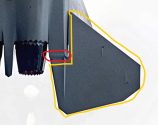
The horizontal stablizer is one piece in the yellow outline. The red outlined part is the hinge. There is no sting.
First prototype 31001 with hinge. When horizontal stablizer is turned, there is no sting.
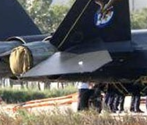
There is nothing wrong with "psyops", i.e.:Question is: what for?
1, there is national goal of world class military, and it's outright reporting to the population. Unlike western type democracies, ironically, there's a concept of accountability.
2, there is a certain important foreign country, which doesn't even spot anything wrong when it speaks about peace through strength, etc.
Projecting strength is important, unless you really want to use it.
Pivot stabs (see F-22 as another example) on the J-35A:
View attachment 155910
Hinge stabs (see F-35 as another example) on the J-35A:
View attachment 155911
View attachment 155913
The tail sting is part of the fuselage, when horizontal stablizer is turned, the sting stays straight.
FC-31 2.0 with pivot
View attachment 155917
J-35A with pivot
View attachment 155916
J-35A with hinge type.
View attachment 155914
The horizontal stablizer is one piece in the yellow outline. The red outlined part is the hinge. There is no sting.
First prototype 31001 with hinge. When horizontal stablizer is turned, there is no sting.
View attachment 155915
Thank you both for the explanations and images, they were exactly what I was looking for.
Is there a known/speculated functional difference between the two types? I can see that pivot-type is called "fancy" and I believe hinge-type was said to be cheaper?
I understand the J-35 and J-35A prototypes suggested they would finalise with different types, but now apparently they have both settled on the hinge-type (to increase parts commonality)?
The size of the composite material processing center is humongous. That is 2.7B RMB investment for 136k m2 area.Rick noted that we've never seen similar footage for the J-20. A key difference here is that the J-35 is intended for export, and this will naturally result in different publicity.
More

Titanium alloy and processing center is also a 1.5B RMB investment, altough of just 31k m2 area.
Both entered production in 2024 or scheduled to have one so.
It is interesting to see that CFRP is so much wider used than Titanium alloy on SAC aircraft since it had mostly been producing flankers in the past, which was mostly Titanium and aluminum if I remember correctly. J-11B and J-16 both likely used some composite material, but the text here is pointing more to next generation aircraft, so J-35 and JXDS, which should be using mostly composite materials based on this.
I made a post about the difference, probably in this thread some weeks ago. The pivot type is better in performance up to mach 1 and then better again somewhere in higher mach number. Hinge typle is better in transonic and just above mach 1. So pivot type is better overall by a good margin particularly in low speed. One quoted advantage of hinge type is its smaller size and lower demand of force needed. But by the look of J-35 and pivot type J-35A, it is not much bigger than hinge type, so hinge's advantage seems not worth for its performance. It's never about cost.Thank you both for the explanations and images, they were exactly what I was looking for.
Is there a known/speculated functional difference between the two types? I can see that pivot-type is called "fancy" and I believe hinge-type was said to be cheaper?
I understand the J-35 and J-35A prototypes suggested they would finalise with different types, but now apparently they have both settled on the hinge-type (to increase parts commonality)?
Rick noted that we've never seen similar footage for the J-20. A key difference here is that the J-35 is intended for export, and this will naturally result in different publicity.
The size of the composite material processing center is humongous. That is 2.7B RMB investment for 136k m2 area.
Titanium alloy and processing center is also a 1.5B RMB investment, altough of just 31k m2 area.
Both entered production in 2024 or scheduled to have one so.
This is unprecedented.
Serial production of the J-XDS won't begin until the early, if not the mid 2030s, which means CATIC must be projecting a torrent of J-35 export orders given what SAC and other AVIC subsidiaries/affiliates are likely spending in totality on CAPEX to construct this aerospace city, which is by no means a misleading name given the footprint.
AVIC most likely expect the J-35 to become the MiG-21 of its generation in terms of global proliferation, and TBF, it's a reasonable outlook.
The alternatives are either immature (e.g. Su-57), or subject to the terms and conditions (and whims) of US foreign policy (e.g. F-35, KF-21). Moreover, the amount of production capacity that's visibly in play imply economies of scale that should make the J-35 highly competitive in terms of pricing, on top of capabilities and politics, against both Western and non-Western alternatives.
There is nothing wrong with "psyops", i.e.:
1, there is national goal of world class military, and it's outright reporting to the population. Unlike western type democracies, ironically, there's a concept of accountability.
You're very much on target, but it's more than just accountability, it's legitimacy.
Weapons systems like the J-35/A empower Chinese sovereignty in a world where vassalhood under Washington with Trump at its helm is increasingly undignified and untenable, in terms of domestic politics, everywhere from to to .
For Beijing, sovereignty translates to national dignity and political legitimacy before domestic constituents.
Likewise, (would be) foreign buyers of the J-35/A recognize that they're paying for sovereignty, as much as they're paying for a stealthy airframe, if not even more so.
I suspect one reason why CCTV is unusually transparent about the J-35/A is because the anchor export customer is paying extra for local assembly to not only maximize sovereign use of their J-35 derivative, but also to enhance regime legitimacy before domestic constituents. However, local assembly will inevitably make it even harder to preserve the J-35's "secrets," so might as well as be transparent.
2, there is a certain important foreign country, which doesn't even spot anything wrong when it speaks about peace through strength, etc.
Projecting strength is important, unless you really want to use it.
I get where you're coming from. There's absolutely value to disinformation, especially if you're fighting a hybrid or cold war, and TBH, that's where the US and China are headed, assuming they're not there already.
However, when it comes to industrial capacity, there's no need for China to make any effort in projecting strength, especially when the US government will take care of it themselves. Case in point:
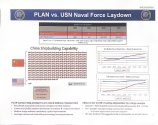
Equation
Lieutenant General
Because the West keeps China's COMAC from entering their market to compete by not certifying the plane.To be frank China is still behind the West in aerospace because of the civilian sector which massively lags behind.

